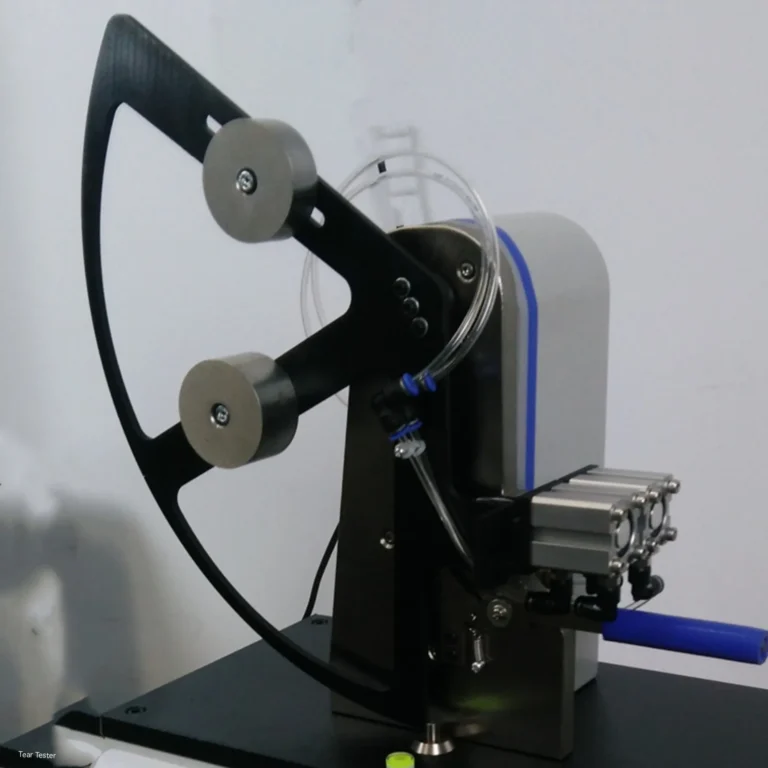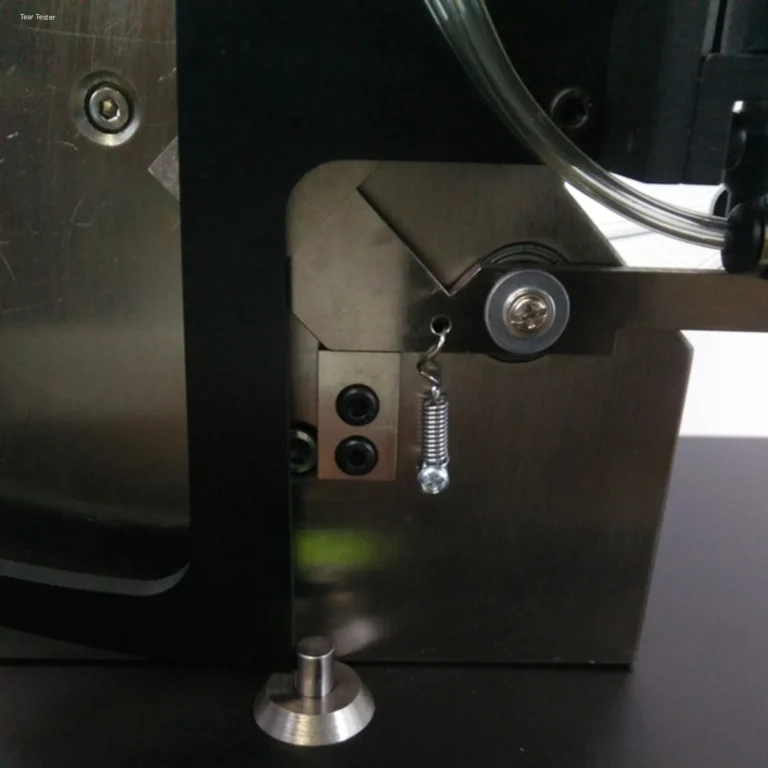Elmendorf Tear Tester
About Us
Introduction to Elmendorf Tear Test
The Elmendorf tear test is a widely accepted method for evaluating the tear resistance—also called tear strength—of plastic films, paper, textiles, and other thin sheet materials. By simulating real-world tearing conditions, this method helps quality control professionals in packaging, medical device production, and materials research ensure that their materials can withstand sudden mechanical stress. ASTM D1922, the international standard for this test, provides a structured approach to determining the force required to propagate a tear through a specimen using a pendulum device.

Prefix describing what your business does will be here
Understanding the Elmendorf Tear Test and Its Importance
01
Tear resistance
Tear resistance is a critical mechanical property that reflects a material’s durability and performance. The Elmendorf tear test simulates accidental tearing or handling damage, making it especially relevant for flexible packaging, plastic films, medical pouches, and technical textiles.
02
Packaging integrity
Unlike tensile strength or elongation, tear strength provides direct insight into how a material will behave when a tear has already begun—a crucial consideration for packaging integrity.
03
Elmendorf tear test
The elmendorf tear test provides a quantitative measure of a material’s ability to withstand tearing forces, helping users determine suitability and durability across applications.
Prefix describing what your business does will be here
The Principle of the Elmendorf Tear Test
Test Method Overview
ASTM D1922 Elmendorf Tear Tester
This method ensures repeatability and comparability, especially when testing films with uniform orientation and low extensibility.
Step 1
Cutting a pre-slit into a standardized sample (typically 63 mm × 76 mm).
Step 2
Mounting the sample between two clamps—one fixed, one connected to a pendulum.
Step 3
Releasing the pendulum, which swings through the sample, tearing it across a defined length (43 mm).
Step 4
Measuring the energy loss (in mN or grams-force), which correlates with the material’s tear strength.
Applications of Elmendorf Tear Test
The elmendorf tear test is used in a variety of sectors,including:
Flexible Packaging:
Evaluated seal strength and packaging integrity for food, pharmaceutical, and medical pouches.
Plastic Films:
Assesses mechanical reliability of polyethylene, polypropylene, PET, PVC, and multilayer laminates.
Paper & Cardboard:
Determines resistance to tearing under manual or mechanical stress.
Textiles & Technical Fabrics:
Ensures suitability for wearable technology, PPE, or industrial use.
Quality Control Labs:
Used in manufacturing and inspection processes to guarantee product compliance.
SLD-01 Tear Tester
Why Choose Cell Instruments’ SLD-01 Tear Tester?
The SLD-01 Elmendorf Tear Tester from Cell Instruments is engineered for high precision and ease of use. Designed to comply fully with ASTM D1922, ASTM D1424, and other major standards.
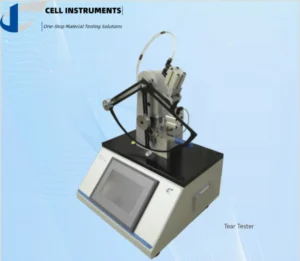
- PLC Control & HMI Touch Screen for intuitive operation.
- Pneumatic Specimen Clamping ensures secure grip and accurate results.
- Auto Data Statistics & Microprinter for efficient workflow.
- Wide Test Range to accommodate plastic films, textiles, paper, etc.
- Calibration Weight included for easy test range validation.
- Calibration Weight included for easy test range validation.
Prefix for the Company Approach section will be written here
Why Testing Tear Strength Is Essential
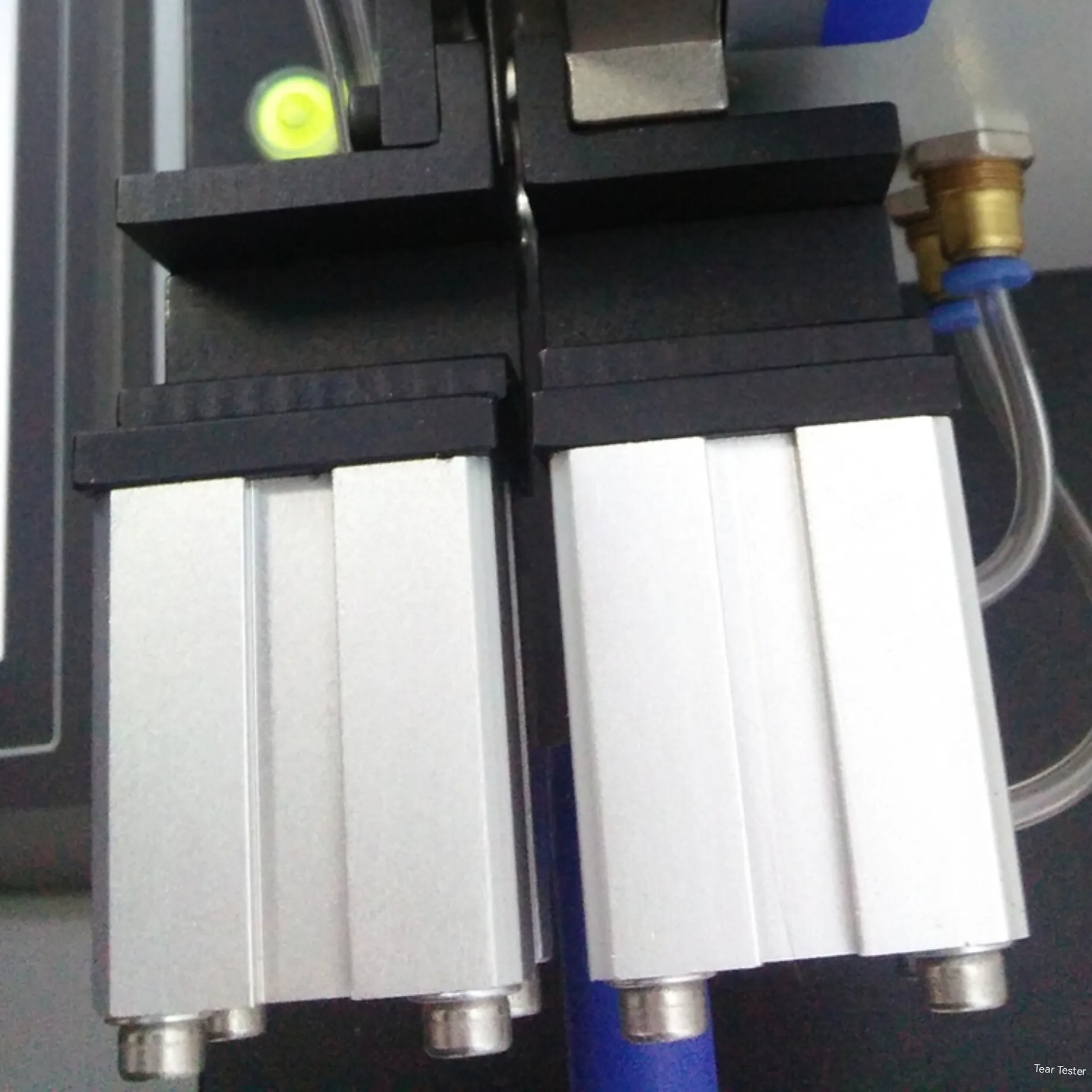
Accurate tear strength analysis helps manufacturers:
Identify potential material failures in real-world conditions. Ensure compliance with packaging safety and transportation regulations.
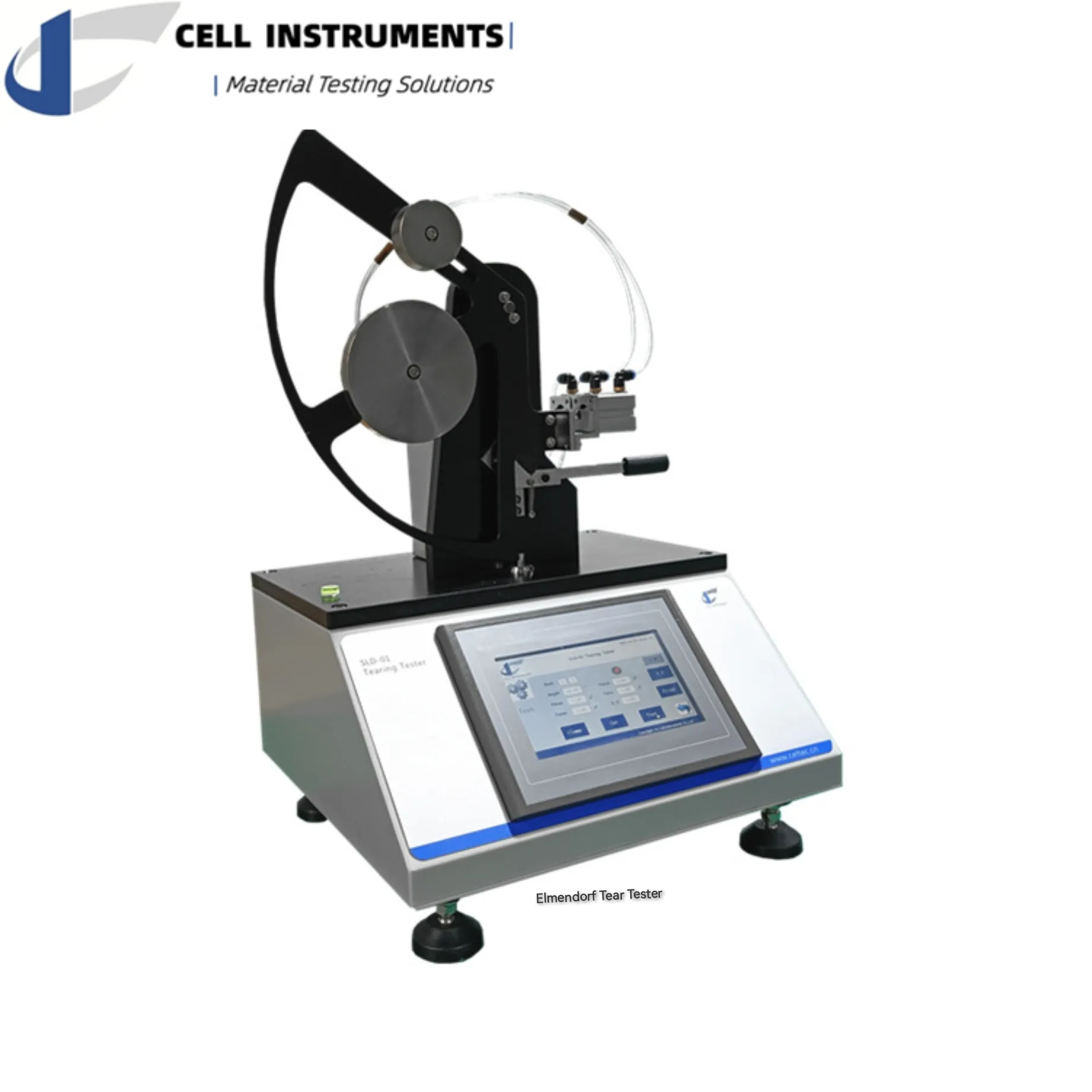
Accurate tear strength analysis helps manufacturers:
Optimize material selection for both performance and cost. Improve product lifecycle and consumer safety.
Offerings
Why Testing Tear Strength Is Essential
01
Why Testing Tear Strength Is Essential
Accurate elmendorf tear strength analysis helps manufacturers:
-
Identify potential material failures in real-world conditions.
-
Ensure compliance with packaging safety and transportation regulations.
-
Optimize material selection for both performance and cost.
-
Improve product lifecycle and consumer safety.
02
Why Choose Cell Instruments
As a leading manufacturer of materials testing instruments, Cell Instruments Co., Ltd. provides:
Full Customization: Tailored designs for special materials and non-standard test parameters.
Industry Expertise: Decades of experience in packaging, medical, and electronic material testing.
Reliable After-Sales Support: Professional training, calibration, and troubleshooting assistance.
Global Standards Compliance: All instruments conform to international quality benchmarks.
Frequently Asked Questions (FAQ)
Q1: What materials can be tested using the Elmendorf method?
A: Suitable materials include plastic films, paper, textiles, aluminum foil, and flexible laminates.
Q2: How does ASTM D1922 differ from ISO 6383?
A: Both are harmonized in methodology but may differ slightly in specimen preparation and unit conventions.
Q3: How many specimens should I test?
A: ASTM D1922 recommends testing at least 10 specimens in each principal direction for reliable data.
Q4: What if my material tears obliquely?
A: Note the oblique tear direction as it may affect reproducibility. Use standardized clamping and consistent slit placement to minimize variability.
Q5: Can the SLD-01 be used for high-capacity testing?
A: Yes. The device supports different pendulum weights, enabling force ranges up to 6400 mN for tougher materials.
How does the Elmendorf method work?
The test uses a pendulum that swings through a pre-slit specimen. The energy lost in tearing the sample is measured, which corresponds to the material’s tear strength.
Tester Standards
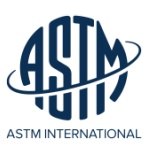
ASTM D1922
Test method for measuring the tear resistance of plastic film and thin sheeting using the pendulum method (Elmendorf tear).
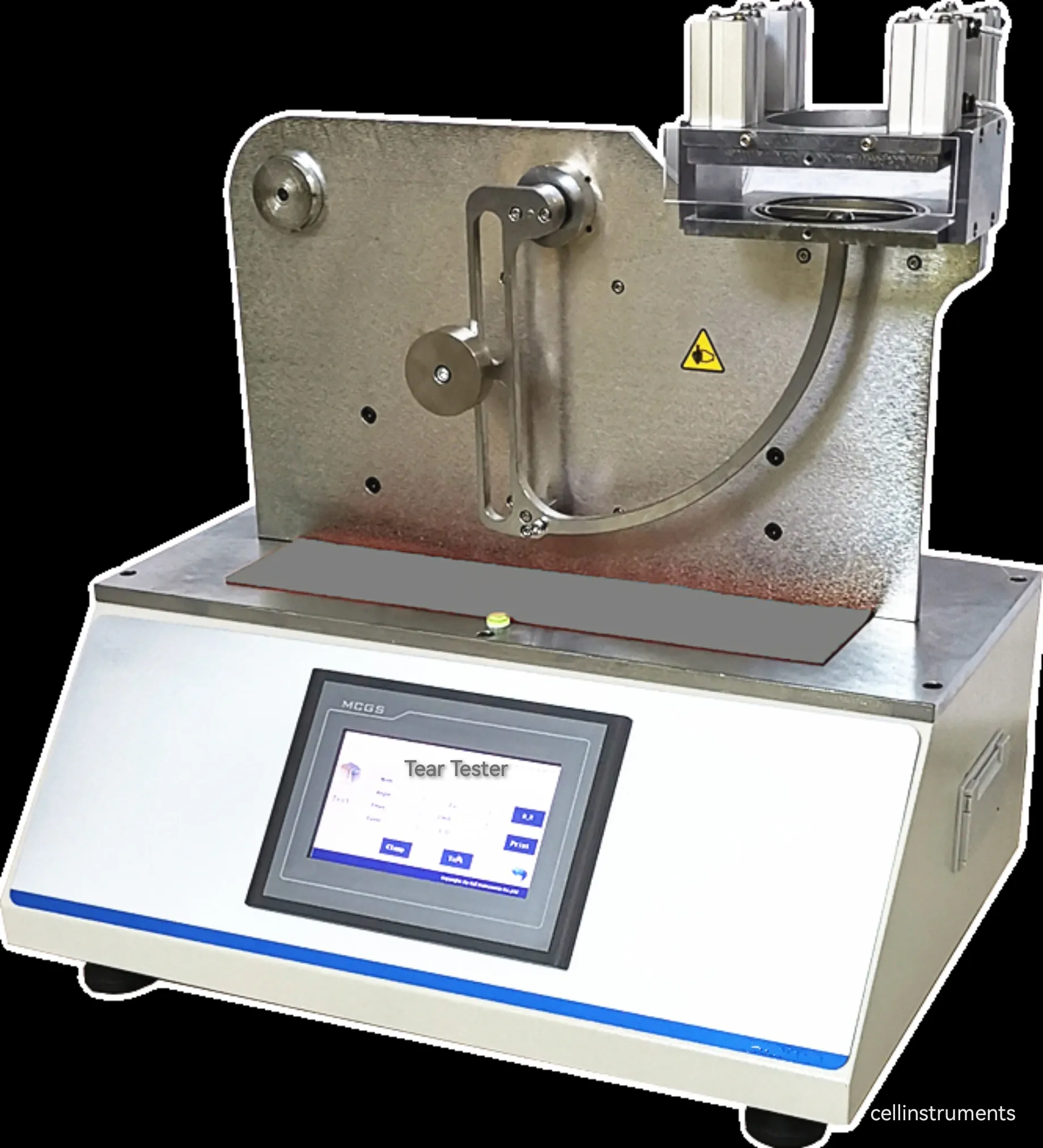

ASTM D1424
Standard test method for Elmendorf tear resistance of paper.

ISO 6383
Specifies methods for determining tear resistance of plastic films and sheeting.

ASTM D689
Standard test method for internal tearing resistance of paper (Elmendorf-type method).

ISO 1974
Specifies the method for measuring tear resistance of paper using the Elmendorf tester.

We Provide our Best Capacity in
- Precision Testing Instrumentation
- Packaging & Medical Device Evaluation
- Paperboard & Film Performance Testing
- Tailored Automation & Custom Design
- One-Stop Testing Service & Technical Support
- Advanced Materials Analysis Solutions
- OEM & Private Label Cooperation
- Smart Industrial Integration


Get in touch
No. 5577 Gongyebei Rd, Licheng, Jinan, 250109, Shandong, P.R.C.
marketing@celtec.cn
+86 185 6001 3985

